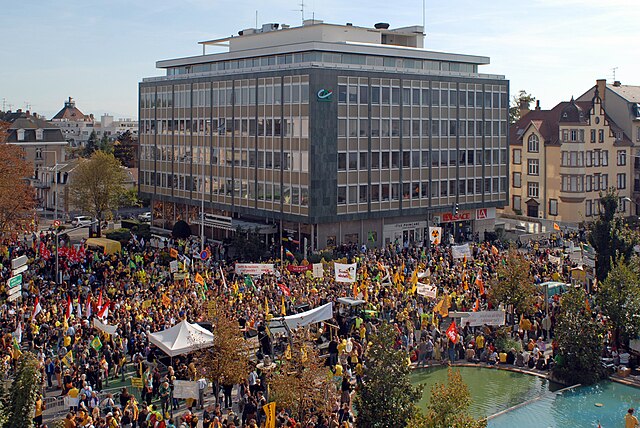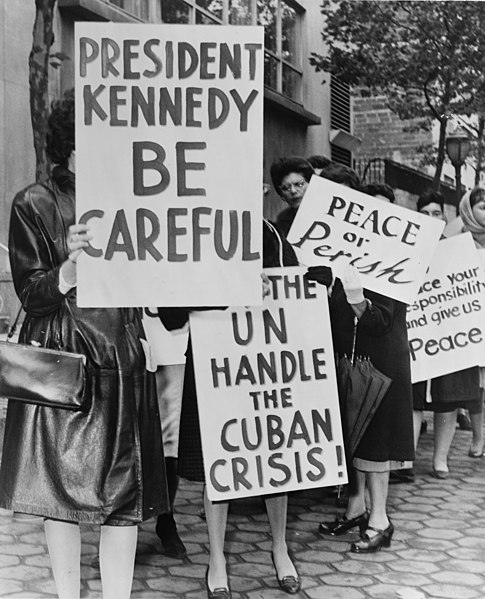Nevada Desert Experience is a name for the movement to stop U.S. nuclear weapons testing that came into use in the middle 1980s. It is also the name of an anti-nuclear organization which continues to create public events to question the morality and intelligence of the U.S. nuclear weapons program, with a main focus on the United States Department of Energy's (DOE) Nevada National Security Site.
Members of Nevada Desert Experience hold a prayer vigil during the Easter period of 1982 at the entrance to the Nevada Test Site.
November 1951 nuclear test at Nevada Test Site
The anti-nuclear movement is a social movement that opposes various nuclear technologies. Some direct action groups, environmental movements, and professional organisations have identified themselves with the movement at the local, national, or international level. Major anti-nuclear groups include Campaign for Nuclear Disarmament, Friends of the Earth, Greenpeace, International Physicians for the Prevention of Nuclear War, Peace Action, Seneca Women's Encampment for a Future of Peace and Justice and the Nuclear Information and Resource Service. The initial objective of the movement was nuclear disarmament, though since the late 1960s opposition has included the use of nuclear power. Many anti-nuclear groups oppose both nuclear power and nuclear weapons. The formation of green parties in the 1970s and 1980s was often a direct result of anti-nuclear politics.

169,000 people attended an anti-nuclear protest in Bonn, West Germany, on 14 October 1979, following the Three Mile Island accident.
Anti-nuclear demonstration in Colmar, north-eastern France, on 3 October 2009
Anti-Nuclear Power Plant Rally following the Fukushima Daiichi nuclear disaster on 19 September 2011 at Meiji Shrine complex in Tokyo, Japan
Women Strike for Peace during the Cuban Missile Crisis






